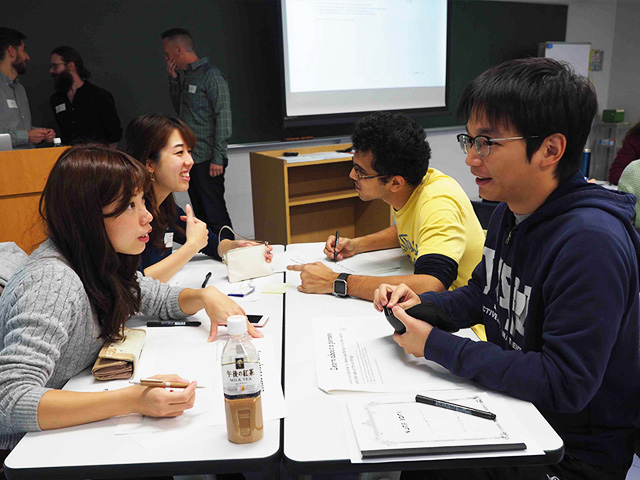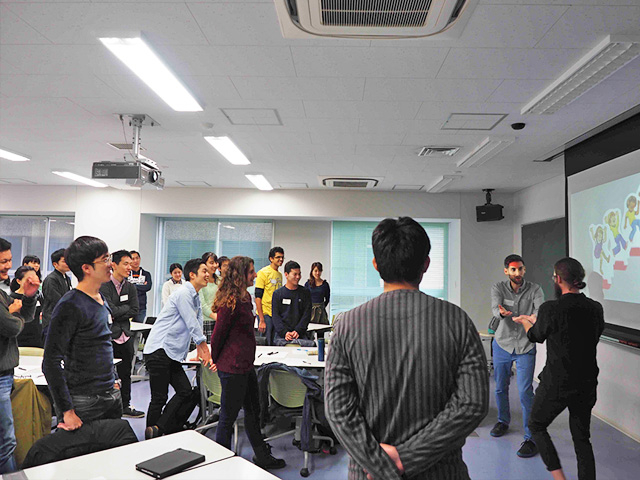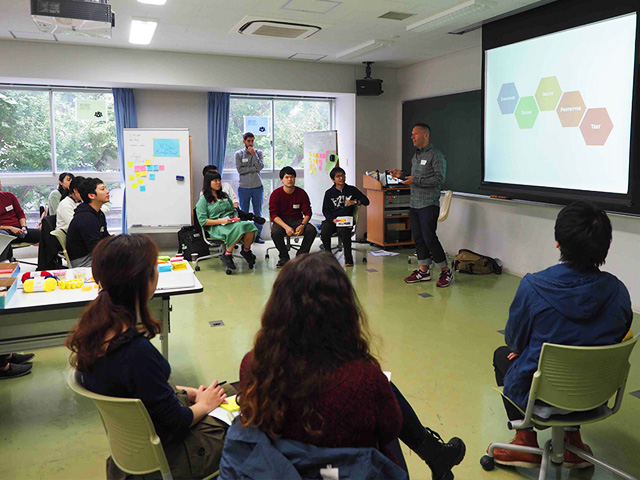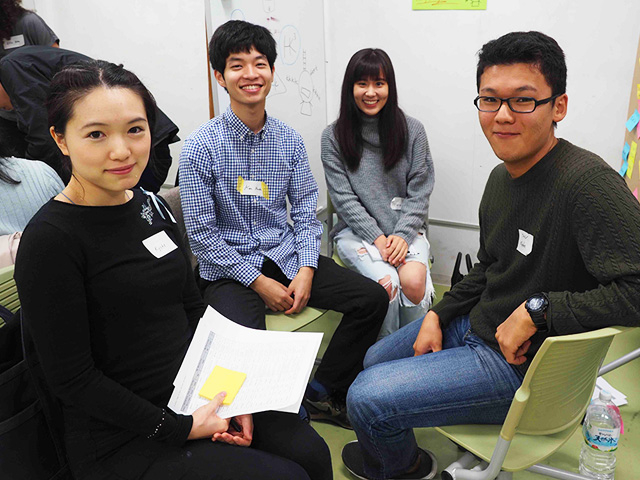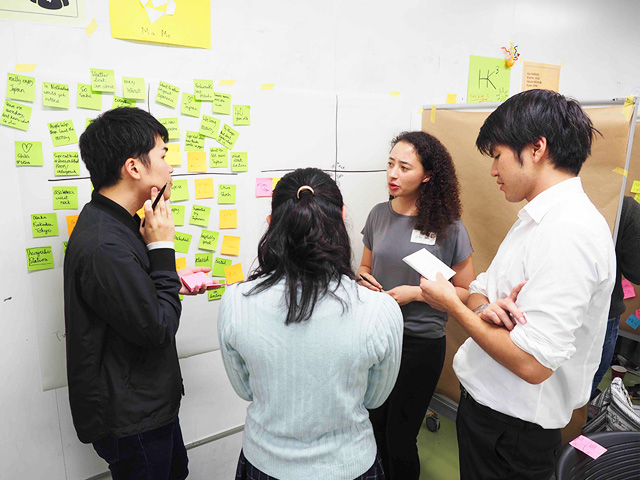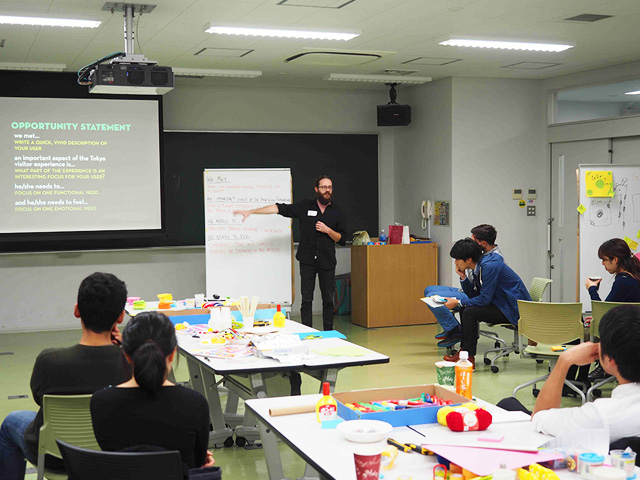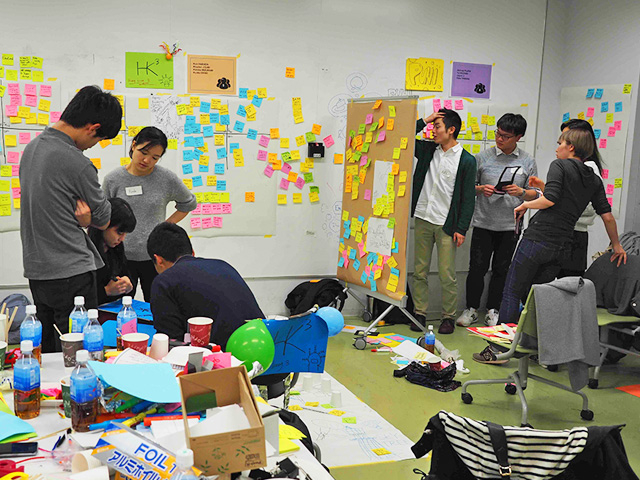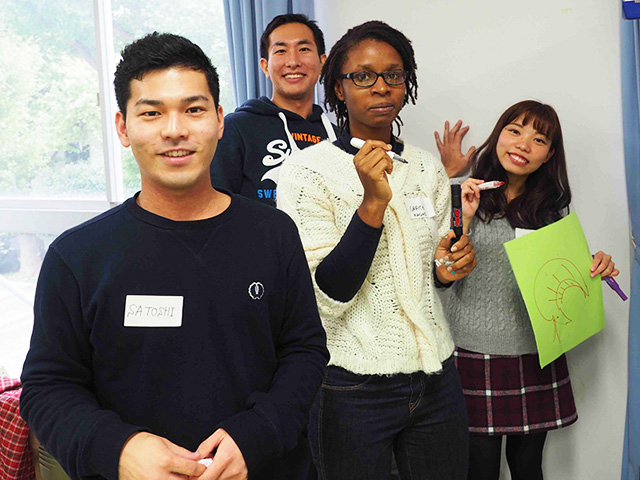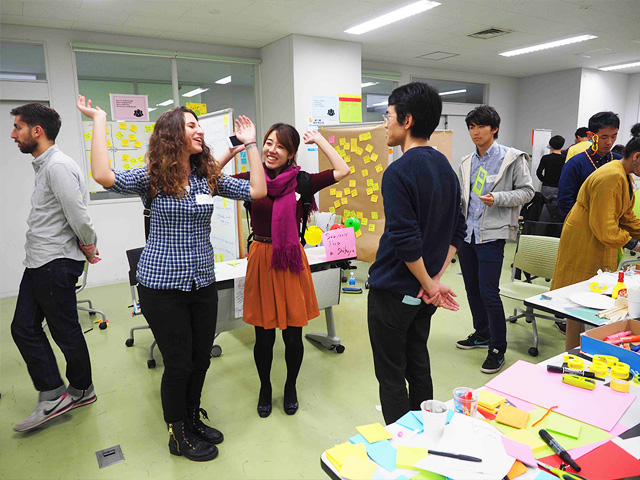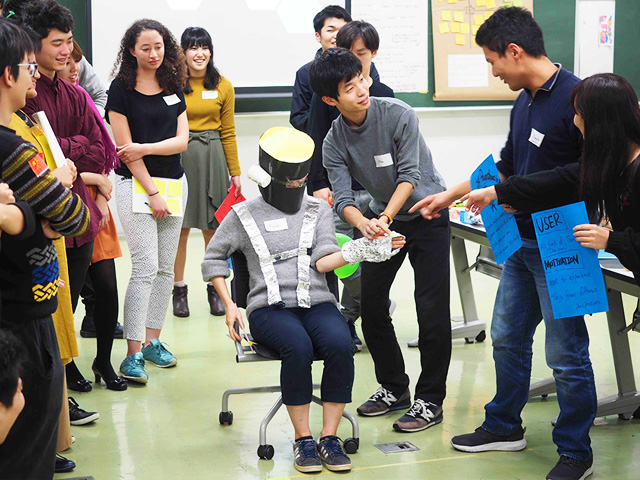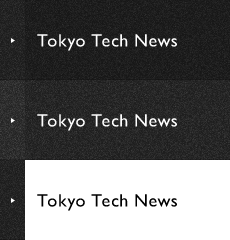The Yamada Dojo at the Academy for Global Leadership (AGL) hosted the fourth annual "d.school comes to Tokyo Tech" workshop on October 28 and 29, 2017. This year, 40 students from Tokyo Tech, The University of Tokyo, Hitotsubashi University, Osaka University, Tokyo University of Foreign Studies, and Keio University attended. As in previous years, three faculty members from Stanford University's d.school returned to facilitate the workshop:
- Thomas Both: Director, Designing for Social Systems, d.school
- David Janka: d.school teaching faculty
- Scott Witthoft: Space designer and d.school faculty
Theme and process
This year's theme was to Redesign the Tokyo Visitor Experience.
Tokyo is a major travel destination for millions each year. With the 2020 Olympics just around the corner, the experiences of Tokyo visitors will become more important to consider. Today, people come to the city for many reasons, including as tourists to experience major sights, as explorers to immerse themselves in Japanese culture, as students or researchers to learn and study, or as employees focused on work assignments and projects. What does it mean to be a Tokyo visitor? Is there an opportunity to create a new type of experience? How can we reevaluate what it means to visit Tokyo? How can residents of Tokyo reconsider their role as hosts?
The event was divided into two days during which participants were encourage to explore the potential of the design thinking process.
Day 1
Discover empathy through pair interviews
In pairs, participants revealed the content of their wallets, and explained the reasons and meaning of the content to understand better the interests and ideas of their partner.
Make teams and understand themes
"Redesign the Tokyo Visitor Experience" aimed to tap into the needs and desires of foreign visitors in Tokyo and to redesign their Tokyo experiences. Students worked on the theme in ten groups of four.
Carry out field work
Participants visited Tokyo neighborhoods often frequented by international visitors such as Jiyugaoka, Daikanyama, Shibuya, and Oimachi to ask tourists about their experiences in the megacity. Although the participants explained their intentions and expected cooperation, it was a challenge to get honest opinions from and empathize with the visitors.
Identify problems and develop opportunity statements
Based on the interviews, participants shared their interpretations and considerations within their group to identify and address issues.
Day 2
Ideate solutions
Participants brainstormed as many ideas as possible to address the identified problems. Practicality or technical challenges did not matter here. The objective was to ideate as much as possible. Team members then voted to select the solutions with the greatest potential impact.
Prototype
The solutions (ideas) selected were visualized as models using paper, paperboard, chenille stems, and chopsticks. The physical creations gave hints about potential users, usages, and effects.
Verify and brush up
Students from AGL, other universities, and members of the public tested the samples (or services) and provided feedback. Groups then tried to improve their prototype based on the feedback. In the end, participants presented their improved sample in a skit. Other students and instructors asked questions and provided additional comments.
Comments from participating students
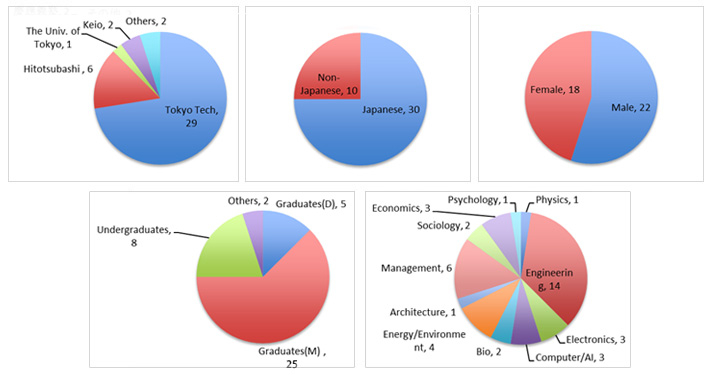
University |
D/M/B* |
Comments |
Tokyo Tech |
D2 |
I liked the freestyle workshop. We were able to talk over coffee, and four people was a perfect number in terms of group size. |
Tokyo Tech |
M2 |
The workshop was very informative because we could actually experience every step of design thinking within two days. It was more exciting than I expected. I didn't expect to actually conduct interviews outside the classroom. |
Keio University |
M1 |
Each step of the workshop was well organized and detailed, so the purpose was clear. The workshop contained real experiences such as interview on streets, production of prototypes, and testing. I have never experienced such a well-organized workshop with so much contents and detail. |
Hitotsubashi University |
B4 |
As the instruction was clear and detailed, we could understand what to do. Even when we were not quite sure, we could ask the staff walking around the room. It was more frank than I expected. I felt relaxed as we had tea breaks with enough time to complete the process. I felt the distance between teacher and student was closer than in other classes. |
The University of Tokyo |
B2 |
I liked that I could realize functional needs and emotional needs. |
Tokyo Tech |
B2 |
It was an active event and so much fun. Especially going out of the school and talking with strangers was a good experience. |
Tokyo Tech |
M1 |
The lectures were more stimulating, and the time was shorter than I expected, so I felt like everything went by very fast, which was good for me. |
Hitotsubashi University |
B4 |
I could understand that prototyping is testing your hypothesis rather than making a product as completely as possible within a short time. |
Tokyo Tech |
M2 |
I was very relaxed during the workshop. Although I had no confidence to finish the design work in two days, we made it in the end. |
Tokyo Tech |
M2 |
I love that the instructors were also doing the same thing with us and that made me feel more comfortable to do the task and have more understanding about each process. Moreover, I loved that the atmosphere of the class was not "teacher teaching student," but more like "senior helping junior." |
Tokyo Tech |
B3 |
I liked doing the user interview. Before this lecture, I felt difficulty asking users about the hidden requirements in their life. I learned a critical way to interview to make it easy for the user to share their story. |
Tokyo Tech |
M2 |
Students could understand the whole process of design thinking in only two days. It was impressive that quicker actions than I expected could generate a more proactive atmosphere. |
Tokyo Tech |
M2 |
I liked the way the workshop worked; it forced participants to follow the design thinking method and made them truly experience it. |
- *
- D=doctoral, M=master's, B=bachelor
Comments from Dojo Leader Professor Keisuke Yamada
Design thinking is sometimes introduced and understood as "a how-to to create innovation." Its five steps — emphasize, define, ideate, prototype, test — are important, but these steps are often familiar for anyone engaging in new product or market development.
Rather, the fundamentals of design thinking are rooted in (1) setting a mindset for "creative confidence" and (2) fostering a skill set for "user centricity" as follows.
The five steps mentioned above are understood as processes to internalize both the mindset and the skill set. Design thinking is controversial as there are different approaches to human resource education. Those who put priority on infusing concepts and mindset find it meaningful, while those who put priority on a "how-to" approach for achieving results see its limits.
The Yamada Dojo encourages the creation of new value and mainly consists of students who haven't actually engaged in new product or market development. Therefore, we believe infusing concept and mindset should be more important than a "how to" approach. In this sense, design thinking is an ideal topic for these students. It is an appropriate topic not only for those who are new to product or market development, but also for those with experience when they reflect on their actions and organize their thoughts. If we want to put more weight on training of "setting issues to be solved" or "studying and checking hypotheses," or if students already have specific interest in customer development for specific products or services, Lean LaunchPad program approaches may be preferred over design thinking methods.
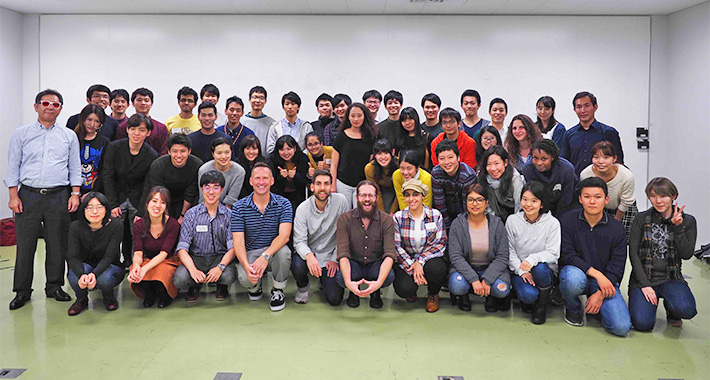
d.school comes to Tokyo Tech is the only workshop offered by Stanford tutors at Japanese universities. It will be held again next year, and is open to both first-timers and more experienced participants who are hungry to create.
. Any information published on this site will be valid in relation to Science Tokyo.


